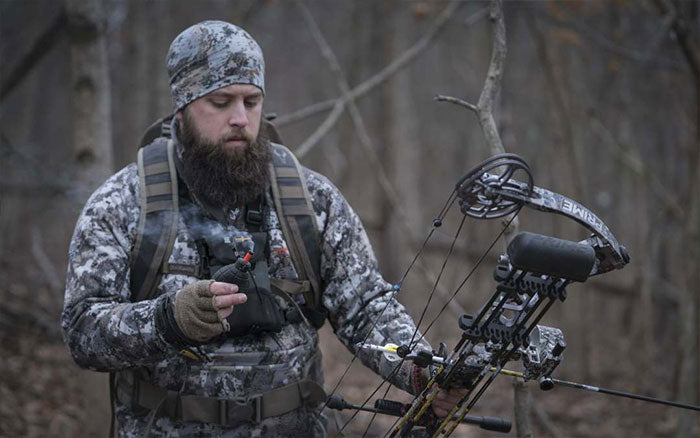
Five Tools and Tips for Editing Hunts with Nick Ventura
Although I have spent some time editing hunts I am well aware my current level of expertise is extremely limited. I plan to gain more skills and tactics by attending a Filmthehunt.com editing school this summer but wanted to first hop on the phone with the Film The Hunt’s co-founder, Nick Ventura to learn a little bit about the fundamentals of video editing- specifically as it relates to editing hunts. He was more than willing to let me share some of my main takeaways with the Fourth Arrow community.
Color Correction & Color Grading
In order to understand how to color grade and color correct footage you need to know what each term means.
Color correction is tweaking the exposure and white balance, Color grading means adjusting saturation, contrast, and color schemes to achieve the ideal tone for the film. Nick elaborates, saying “The important part is that you go in and correct that scene first, and then go ahead and grade it to set the tone.” Examples of how color grading can impact your footage can be found here:
Setting a Tone
Now what is the tone of a video? Well in each video you need to identify the mood. You wouldn’t want to have a happy scene with dark colors- that will only confuse the viewer. Nick often looks at the film, identifies the mood, and color grades the footage to reflect it. “If we’re trying to bring out drama then we may add some more blues to the shadows to trick the individual into thinking it’s a very dramatic scene. If it’s a happy scene, we may try to warm it up. Each scene and project deserves different color treatment”.
Nick referenced an episode of The Life where Matt Kline of Exodus Trail Cameras shot a big buck and the team was unable to recover it. “In the beginning the colors were warm, he shot the buck, and was pumped up! But over the course of the next two minutes when they started looking for the buck the footage progressively got desaturated and the colors got a little cooler. The goal is to have the video depict the emotions felt at that moment.”
“Having two different color schemes can farther differentiate two settings.” Nick adds. “When referencing footage from the past the editor can make that footage cooler and less saturated than “real time” footage. Subliminally, your viewer will start to see that color scheme and identify it as a flashback without the need for a lower third overlay.”
In the Field Audio
The biggest thing with audio is eliminating unnecessary and distracting noises without distorting the sound. There are many features in different programs that help to remove noise. You also want to avoid “peaking”. “When it comes to audio we try to run a minimum of one wireless mic in addition to our shotgun mic. One is directional and records the deer while the wireless records the It really separates the beginners from the professionals.” Nick adds.
Dig Deeper Musically
Audio from the hunt is extremely important, but music (or lack of) can really aid in setting the tone of your film. When it comes to music there are many affordable options. Nick suggests audiojungle, premium beat, and audiomicro as decent sources, but the key is to dig deeper. Avoid the best sellers or trending tracks like the plague, as many others have likely used them in the past. Look into old tracks or do what Nick suggests and have one of your musically inclined friends put together some tracks- You will have more control of these and can be confident nobody else can use that track in their production.
Transitions
So you know what tone you want your footage to have and you have selected some music and audio is under control, but how are you going to piece it all together? You can utilize transitions or incorporate jump cuts, or simply put, no transition at all. According to Nick, the three safest transitions include Fade to black, Fade to white, and Cross dissolve. While these can certainly be overused, they provide a non-intrusive way to tie clips together when a jump cut simply doesn’t flow smoothly. Nick notes that audio needs transitions as well, you don’t want your music to end or start abruptly, fade it out and fade it in for a less obtrusive effect.
So there you have it! Some of the Do’s and Don’ts of video editing! If you’re interested in learning more check out some of the resources Film The Hunt offers. They hold both online and seated education programs from beginners to advanced editors! Happy Hunting and good luck editing hunts!
